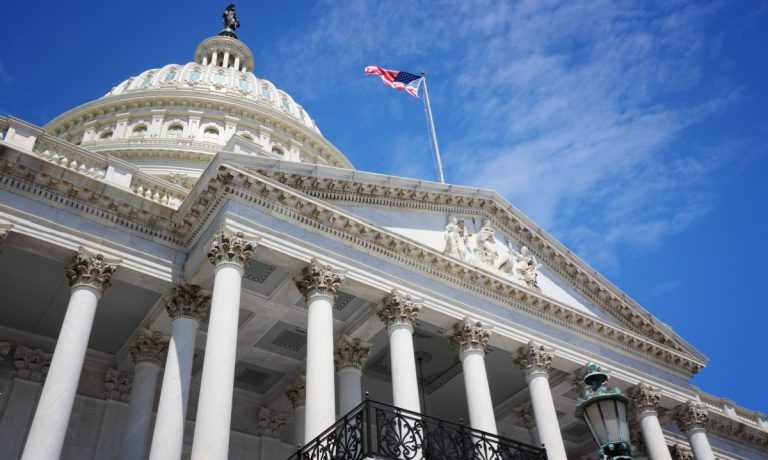
When it comes to cryptocurrency in America, the pressure is on for lawmakers in part because the pressure is already stifling for digital asset firms — deserved or not.
Following recent Securities and Exchange Commission (SEC) lawsuits against Coinbase and Binance, the crypto sector is facing more uncertainty and challenges than ever when it comes to regulation and compliance with existing U.S. laws.
A congressional hearing Tuesday (June 13) titled “The Future of Digital Assets: Providing Clarity for the Digital Asset Ecosystem” will be closely watched by industry observers looking for clues about the crypto industry’s future, as well as any insights into what a comprehensive regulatory framework might look like.
“Emerging laws in the European Union, Japan and Hong Kong are establishing new rules for U.S.-issued dollar stablecoins,” Jeremy Allaire, co-founder, chairman and CEO of stablecoin issuer Circle and a witness for the hearing, wrote in his prepared testimony. “That is a point worth repeating — other nations are enacting laws to regulate the use of the U.S. dollar. The time has come for the United States to lead the development of global rules that will determine how our own currency moves around the world.”
Under discussion Tuesday afternoon are two pieces of legislation, “a bill to provide for the regulation of payment stablecoins, and for other purposes,” and the freshly introduced “Digital Asset Market Structure Discussion Draft.”
While the hearing represents the third time that the current congressional session has met to discuss stablecoin legislation, the Digital Asset Market Structure draft is something new.
The discussion draft outlines a functional framework that would provide digital asset firms with regulatory certainty and fill the gap that exists between the authorities of the Commodity Futures Trading Commission (CFTC) and the SEC.
It would provide the CFTC with jurisdiction over digital commodities and seeks to clarify the SEC’s jurisdiction over digital assets offered as part of an investment contract while establishing a process to permit the secondary market trading of digital commodities if they were initially offered as part of an investment contract.
In what some observers view as political theater, House Majority Whip Tom Emmer of Minnesota joined the introduction Monday (June 12) of Ohio Rep. Warren Davidson’s “SEC Stabilization Act,” a bill meant to take “corrective action” and restructure the SEC, starting with the removal of its chairman, Gary Gensler, following his “long series of abuses,” per a press release.
The lawmakers’ frustrations stem from the fact that both the SEC and CFTC have attempted to resolve the legal question of whether a digital asset is a security or a commodity through enforcement actions. Still, the essential point at hand is not about more or less regulation or even new regulation, but rather the application of the existing regulatory frameworks to digital assets.
“With the right regulatory framework, stablecoins and blockchain networks could scale to support billions of users and tens of trillions of dollars in payment activity,” Circle’s Allaire wrote in his prepared testimony.
He emphasized that currency competition is being “increasingly defined by technological competition,” and that at the heart of “dollar competitiveness” must be American technological superiority — making delivering a [stablecoin] bill to President Joe Biden’s desk “a national priority.”
That’s because both the U.S. and the world more broadly speaking are moving increasingly toward a more digitally native operating environment, where both businesses and consumers may eventually come to primarily rely on digitally native vehicles for money transfer and the programmability of value.
“The European Union, Canada, Dubai and Hong Kong are examples of jurisdictions that in recent months have implemented new legislation or regulations for digital assets, which create attractive destinations for entities that are made to feel increasingly unwelcome by regulators here in the U.S.,” Coy Garrison, partner at Steptoe and Johnson and another witness at the hearing, said in prepared testimony.
Multiple, compounding future-fit technologies are driving this velocity of change and include 5G/6G networks, quantum computing, blockchains and distributed ledger technology (DLT), as well as artificial intelligence (AI).
Still, not everyone speaking at the House Financial Services Committee’s hearing is convinced that the existing rulebooks need to be rewritten or that innovation is incompatible with regulation.
“New legislation is not in the best interest of the investing public or the blockchain industry,” Aaron Kaplan, founder and co-CEO of Prometheum, an SEC- and FINRA-registered, full-service market for digital asset securities, said in prepared testimony. “Legislative efforts will take years to implement while the American public will continue to operate on reckless, unlawful platforms.”
“Those who argue for new laws are simply not willing to comply with existing applicable securities laws and regulations,” Kaplan added.
For all PYMNTS crypto coverage, subscribe to the daily Crypto Newsletter.